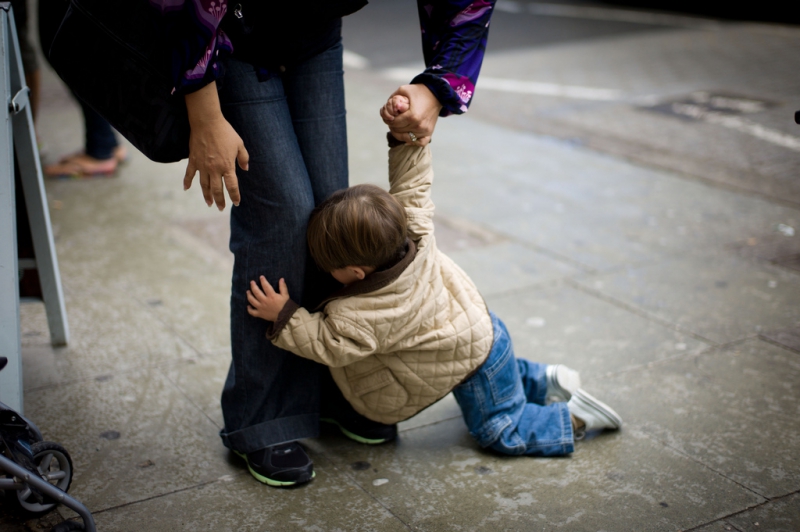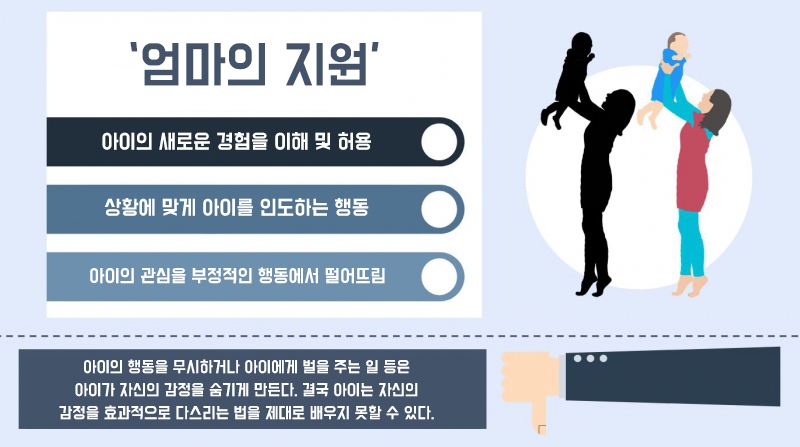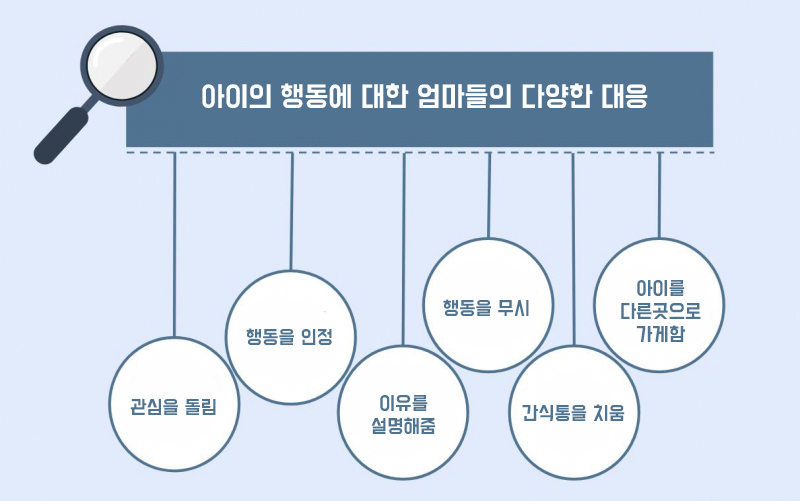 |
| ▲ Source = Flickr |
Nancy McIlwain, a professor of human development and home economics at the University of Illinois at Urbana-Champaign, has published a report that her negative behaviors can affect her mothers'
When a child expresses negative emotions such as shouting and swarming, or behaving disrespectfully, the parents react differently to each other. There are parents who calm the child to calm down and calm down, but there are also parents who are getting angry and overcrowding.
Research has shown that maternal support behaviors affect children when they do negative behaviors. The purpose of the study is not to identify 'bad mothers' but to help parents cope better when their children rebel.
 |
"My mother's support" includes understanding and allowing the new experience of the child, including the act of guiding the child to the situation, as well as helping the child, said Dr. Nyann Triravindran, a doctoral student at the University of Illinois who participated in the study. In some situations, the ability to turn a child's attention away from triggering a child's inappropriate behavior also belongs to the mother's positive support behaviors.
Negative support from the mother, such as neglecting the child's behavior or punishing the child, hides the child's feelings. A child may not learn how to effectively manage his feelings.
In this study, Professor McElwain and Lavindran studied how difficult it is for a child to express negative emotions, as the mother's support is critical to the child's emotional and behavioral development. Understanding the stress level of the mother when the child is not listening and observing how the mother supports the child.
The researchers conducted short and simple experiments with 127 infants and their mothers. I put my mother and child in one room and the child sat in the chair while my mom wrote the answers to the questionnaire. On the table in front of the child, the confectionery was in the transparent snack barrel, but I waited for about 5-7 minutes without touching the sweets until I was told that I could eat it. Mom focused on filling out questionnaires and asking the child not to open the snack bar. The researchers watched the behavior of the mother and child for 5-7 minutes before giving the child a cookie and recorded it in units of 15 seconds.
"Experiments have shown that most children have acted to disturb their mothers to eat snacks," said Ravindran. The children acted to attract the mother's attention by grabbing the mother's pen. Some children opened snack barrels to try to eat sweets, and there were some children who used swarms.
 |
Mom's response to the child's behavior also varied. Some mothers tried to turn their attention away or acknowledged their behavior. There was a mother who explained the reason why the child can not eat the cake now and the child wants to understand it. On the other hand, there were moms who showed negative attitudes such as neglecting the child's behavior, moving the child to another place, or removing the snack bar.
Since then, mothers have written a survey response to how they normally respond in this situation. For example, when a child falls, gets hurt, and gets irritated, he gets angry or angry. The results were very interesting.
The researchers found that mothers who said they were angry showed low support and negative attitudes toward their children during the experiment. They seemed to be supporting the child only after the child had been more intimidated and touched than usual.
Ravindran said, "Mothers who responded that they were angry when they acted in a way that interfered with their mothers for 15 seconds, showed less support for their children in the next 15 seconds. There was a time lag between the child's behavior and the mother's reaction. "
In this experiment, "time difference phenomenon" is very important. It is because the time difference can tell a lot about the relationship and the behavior of the child and the mother.
 |
| Source: Pixar Bay |
McElwain explained that if there was no time difference between the child's behavior and the mother's reaction, it would not have been possible to determine the causal relationship between what was the cause and what was the outcome. The mother's support was reduced, so she noticed that the child did not behave inappropriately, but that the mother's support decreased when the child was inadequate. This time difference was observed more among mothers who said that they were angry.
Based on this research, Ravindran concluded, "Parents should be more careful when dealing with children in an angry situation." "It's the best time to teach your child about emotions," he said. You have to teach your children about emotions because you can calm your child in a similar situation later on.
There are times when you need to discipline children. However, parents' emotions can be disgusting and disgusting as parents. Parents are also angry and hurt by their inadequate attitudes and disrespectful appearance. However, in order to achieve effective discipline in the long term, it is better to refrain from a little emotional response even if the child has negative behavior.
![[Parenting] Infants have a negative impact on mother’s rearing attitude parenting infants have a negative impact on mothers rearing attitude](https://moontore.com/wp-content/uploads/2019/02/parenting-infants-have-a-negative-impact-on-mothers-rearing-attitude-1200x700.jpg)


